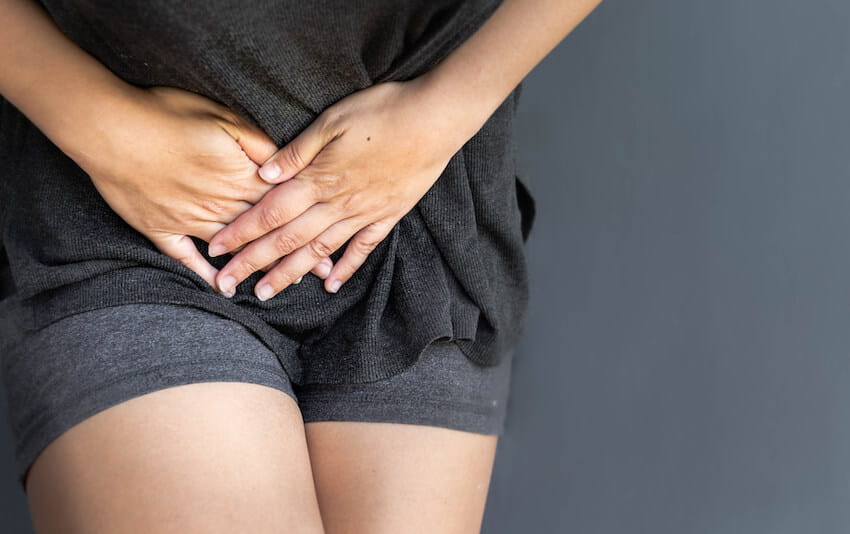Types of urinary incontinence in women and how to get treated

Many women are surprised to learn that urinary incontinence, the involuntary leakage of urine, is a common condition that predominantly impacts women following pregnancy and childbirth.
Urinary incontinence currently affects 20 million people in the United States, with some studies suggesting that about 20 percent of the adult population will experience bladder control issues.
What are the most common types of urinary incontinence in adult women?
The two most common types of urinary incontinence are:
- Stress incontinence — With stress incontinence, urine leakage occurs when the bladder is under pressure, such as when a person laughs, coughs, sneezes or exercises.
- Urge incontinence — Urge incontinence involves a strong, sudden urge to urinate that results in leakage.
These types of incontinence are defined by their causes. Many women may experience a combination of both stress and urge incontinence — a condition commonly referred to as mixed urinary incontinence.
According to Marc Toglia, MD, chief of Female Pelvic Medicine and Reconstructive Surgery at Main Line Health, although these conditions are incredibly common, many women suffer in silence. People may find these symptoms embarrassing and refrain from discussing them with friends or family members.
As a result, many women are not aware of whom to seek help from or the many treatment options available to them. Left untreated, urinary incontinence can negatively impact people's personal, social, and sexual lives. It can also interfere with daily activities like work and exercise.
Fortunately, the specialty of female pelvic medicine is dedicated to the diagnosis and treatment of pelvic floor disorders, such as incontinence, which can dramatically improve the quality of life of women who suffer from these conditions.

How is incontinence diagnosed?
According to Kirstin Liu, CRNP, a Main Line Health nurse practitioner who specializes in female pelvic medicine, there are various reasons as to why someone may leak urine, and it's your health care team's goal to figure out what is going on and why.
Testing for urinary incontinence does not require blood work and sometimes only requires a physical exam. Urodynamic testing is a procedure to evaluate how well the bladder and urethra store and release urine and give more advanced insight into incontinence complaints.
During the diagnostic process, some patients learn that their bladder is contracting or that their urethra is opening inappropriately. "We deal with all the different kinds of leakage and our job is to help differentiate them and make a treatment plan that gets our patients drier," says Liu.
How is incontinence treated?
It is important to recognize that the treatment options for urinary incontinence are different for both urge and stress incontinence, with treatment for both following a stepped-care approach. "Our goal is to improve our patients' quality of life by decreasing or stopping their incontinence when possible," adds Liu.
Urge incontinence, or overactive bladder, is usually treated first with behavioral therapy, bladder retraining, and fluid and diet modifications. Lifestyle changes, such as avoiding excessive fluid intake and limiting carbonated beverages, are frequently recommended. Drug therapy is often added along with these treatments, and there is a limited role for pelvic floor muscle exercise in the treatment of urge urinary incontinence.
The first line treatment for stress incontinence is a structured home program of pelvic floor muscle exercises, as well as weight loss. Pelvic floor muscle exercises have been shown to reduce the number of incontinence episodes in women when performed daily for at least three months. Drug therapy plays little to no role in the treatment of stress incontinence.
There are effective treatment options available for those who don't respond successfully to the first- and second-line therapies. Pelvic floor physical therapy techniques, such as biofeedback, can teach patients how to control their bladder and improve symptoms of stress incontinence in the short term.
For women who desire a more permanent solution to the symptoms of stress urinary incontinence, minimally invasive surgical options, such as a mid-urethral sling procedure or urethral bulking are the mainstays of treatment.
According to Toglia, the first surgeon to perform a minimally invasive sling in Philadelphia over 20 years ago under Main Line Health, minimally invasive sling procedures have been demonstrated to have high rates of cure (over 85 percent) with high rates of patient satisfaction (over 90 percent) in women who were followed for more than 15 years following surgery.

For patients with urinary urge incontinence who do not respond to medical drug treatment, a number of third-line treatment options exist. Urge incontinence can be successfully treated with an office-based nerve stimulation procedure similar to accupuncture, known as tibial nerve stimulation, or biofeedback therapy with vaginal stimulation. Alternatively, surgically implanted devices that stimulate the pelvic floor nerves are an option for many.
"Recent advances in implanted neurostimulation therapy — including MRI compatibility, and rechargeable stimulators — have made this a very attractive option for many patients these days," says Toglia. Finally, bladder Botox is another office-based therapy for urge incontinence.
Weight loss is usually recommended in the management of both stress and urge incontinence.
Main Line Health serves patients at hospitals and health centers throughout the western suburbs of Philadelphia. To schedule an appointment with a specialist at Main Line Health, call 1.866.CALL.MLH (225.5654).
 Content you want, delivered to your inbox
Content you want, delivered to your inbox
Want to get the latest health and wellness articles delivered right to your inbox?
Subscribe to the Well Ahead Newsletter.
